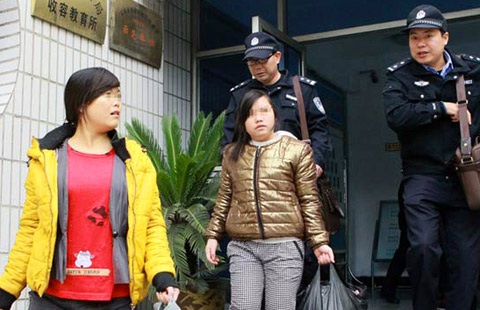
The announcement by the People's Bank of China, the central bank, on Nov 21 that benchmark interest rates were being cut for the first time since July 2012 surprised the market. That was mostly because top authorities had previously signaled that they were reluctant to resort to all-round rate adjustments to shore up the economy, which has been showing more signs of slowing down in the past two months.
The rate cuts showed that the downside pressure of the economy is much heavier than previously thought, that the government has slightly changed its policy orientation, and that rate liberalization must be sped up.
Entering the fourth quarter, the economy showed more signs of slackening. Among all economic indicators, three of them-which Premier Li Keqiang closely monitors to see how the economy is doing-deteriorated in October. Freight volume came in at 3.89 billion metric tons, a rise of 4.8 percent, significantly lower than the year's average of 7.3 percent. Electricity consumption was 450.8 billion kilowatt hours, 3.1 percent higher compared with the average of 3.8 percent. Credit growth also slowed as M2, the broad measure of money supply, rose 12.6 percent at the end of October. The increase was 1.7 percentage points lower than a year ago.
Those worrying signs, coupled with the weakening Purchasing Managers Index and slower retail growth, convinced top policymakers that there was a chance that economic growth would slow to 7.2 percent, a psychological bottom line that they deemed must be maintained to ensure employment.
Although the government had taken measures to boost growth, the recent rate cuts were more proactive.
The central bank cut the benchmark lending rate by 40 basis points. Previously, the bank had usually cut the rate by 25 basis points.
Moreover, the benchmark deposit rate this time was cut by only 25 basis points, smaller than the reduction of the benchmark lending rate. The asymmetric rate cuts illustrated the central authorities' desire to slash financing costs and increase liquidity for the economy.
All these decisions reflect the government's understanding that the economy is facing greater pressure than previously thought.
In a broad sense, the rate cut has suggested a change in central government policies.
Before the rates cut, the government resorted to what were called targeted and selected monetary loosening policies to bolster economic growth. What it did was to reduce the required reserve ratios for rural lenders and select city commercial banks, as well as use short-term financial tools to boost liquidity.
Despite calls from market participants, the government had been reluctant to resort to an all-round rates cut. But the latest rates cut shows the government has altered its tight stance by adopting greater credit loosening. Although the central bank has said the rates cut does not mark a change of direction for monetary policy, it is clear the government policies will not be as austere as they were. More rates cuts are likely if the economy shows no signs of recovery.
But what the government should also do is to press ahead with financial reforms. Before Nov 22's interest rates cut, the government had done a lot to boost credit supply through targeted and selected loosening policies.
But the effect of these policies failed to be brought into full play because of structural problems in the financial sector, thus forcing the government to take a further step in credit loosening by allowing an all-round rates cut.
There are two big problems haunting China's financial market. One is that interest rates have not been fully liberalized, so market players are less sensitive to rate changes. This makes it impossible to efficiently channel capital to where it is mostly needed. Although the government had tried to use "selected" loosening to guide funds to real-economy sectors, the controlled rate system blocks the efficiency of money flows.
The other problem is the State monopoly of the banking sector. State-controlled banks tend to serve State companies, large enterprises and government funding vehicles, resulting in capital overflowing to property and public sectors. So even if the government has boosted liquidity, money largely goes to those two sectors instead of serving the overall economy.
In this sense, private-bank reform and rate liberalization must be advanced to create a competitive and multilayered financial market. If not, the effect of any rates adjustments will be at a discount.
The authors are former financial analysts with Shanghai-based Tianqiang Consulting. The views do not necessarily reflect those of China Daily.








